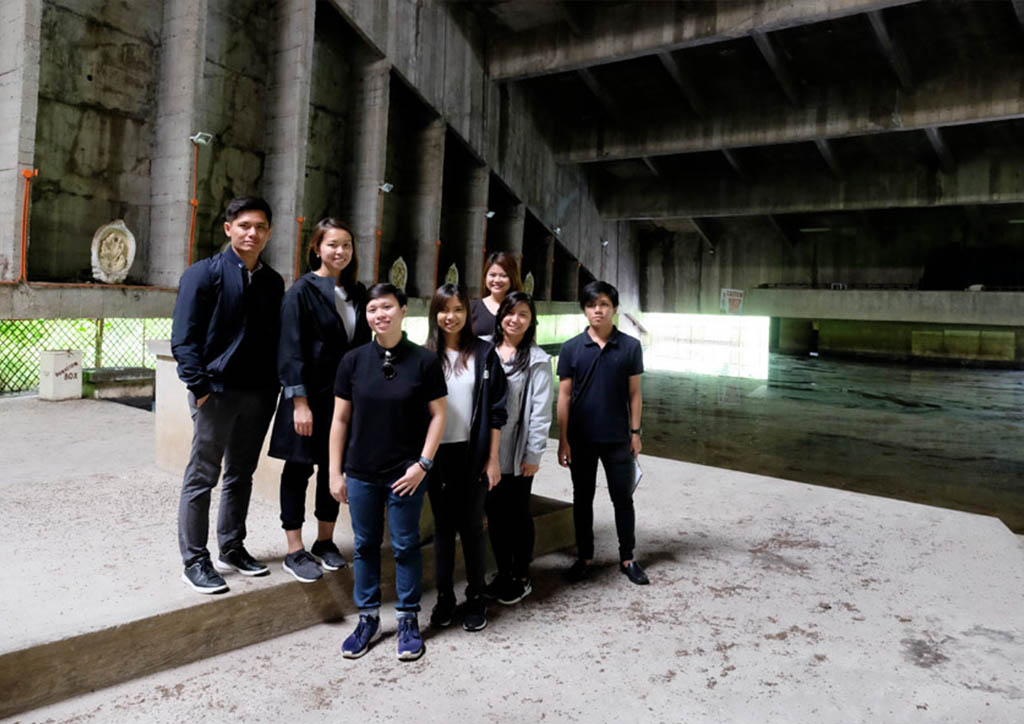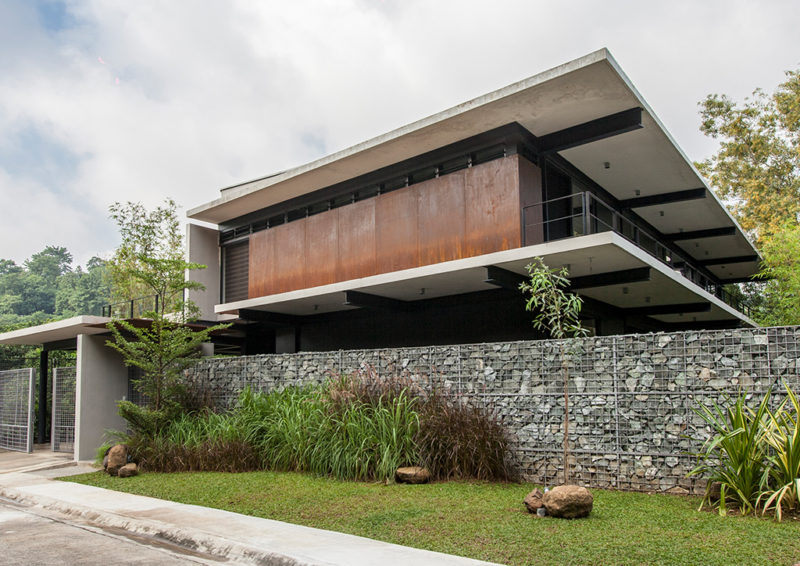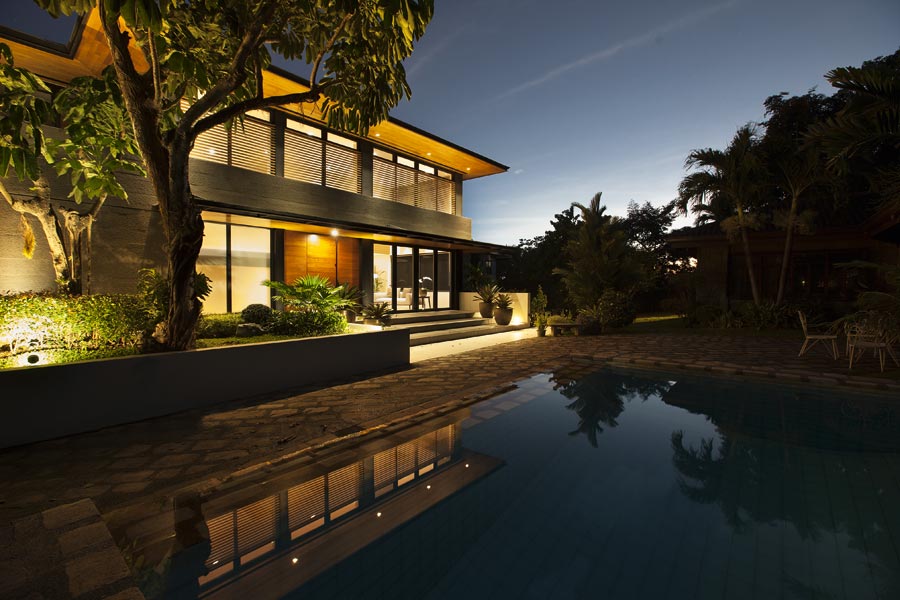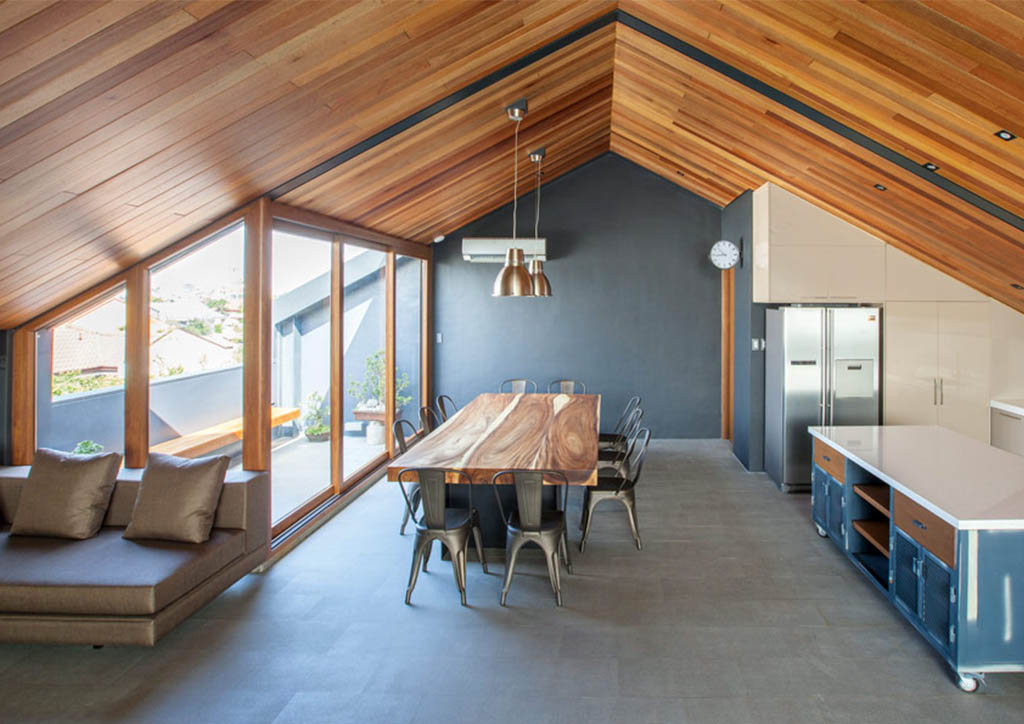
Love Is in the Details: Mendoza and Bermejo of BAAD Studio
Benjee Mendoza and An Bermejo couldn’t look straight at each other without stifling giggles when asked to give each other a message towards the end of the interview. It was as if the principals of BAAD Studio were back in college, who met because they were classmates who, in some twist of fate, keep falling in with the same thesis advisers. “We drew lots for the entire length of college and somehow, we always end up with each other until our fifth year,” Bermejo recalls. After college, the two then split ways to work on different companies, offered a few private commissions here and there two years later, and eventually started BAAD Studio in 2010.
“We started pretty early. I guess we were lucky and also a little bit daring to start earlier because we have to learn the ropes and commit a lot of mistakes. There were mistakes and processes that made our lives more difficult than it was supposed to be, but here we are 10 years after,” Mendoza shares. The studio since then has grown in both size and commissions and are now widely known in local and international architectural circles for some highly-commended projects; Their conceptual work for the Sunken Shrine of Our Lady of Lourdes of Cabetican in Bacolor, Pampanga bagged the Civic Future Project of the Year Award at the 2018 World Architecture Festival.
READ MORE: BAAD Studio wins at the World Architecture Festival 2018
We invited the principals of BAAD Studio to talk about their personal and professional insights as partners. They happily welcomed us in their office, sharing their design process and the lessons they learned together as business partners and now, husband and wife:
BluPrint: Having known your partner since college, would you agree with the notion that it’s difficult for real-life partners to be business partners and vice-versa?
Bermejo: I think we’re lucky that we’ve known each other before the practice started. It’s easier for us because in terms of communication and work ethics, we know each other very well.
Mendoza: We’ve heard stories, both positive and negative. But in our case, I guess we have this because we started everything together.
Bermejo: It was always a dual decision for every step that we take.
Mendoza: All the physical and financial things that we have now is everything that we earned for. It was really starting from scratch. We think the ownership is very mutual, the decision making is also very mutual, and that applies to both household culture and office culture.
Bermejo: We apply the same things we do at home to the way we nurture the people behind BAAD Studio.
Mendoza: It’s all about making them feel at home but still doing it in a corporate proper manner. The engagement towards the team and the entire office is very flat. There’s no hierarchical composition. We really talk to anyone easily and they can easily talk to us any time of the day, even at night. It’s no problem.

Do you recall the first project you worked on together?
Mendoza: One major project that we started is this house. An did the initial planning and I kept my hand off of her work. The concept blew me away because she was sacrificing a lot of typical approaches to building a structure, a house, and the rules around nature. I had to be the first one to present it to the client so I got kind of nervous because it was her idea, not mine. After she presented, the clients loved it and that’s when I actually got the idea of having her plan our projects. It was the first challenge, and we always tell ourselves that if we’re not scared of our own work, we’re not doing good.
Bermejo: If you’re extremely confident about a concept and not scared of anything, like how it’s going to be built, or how it would turn out, you’re actually doing something predictable.
Mendoza: Meaning you’ve done it before. Every project you’re doing should be something new, something that gives you a little jitter. It’s all about pushing through the concept with diligence, intelligence, hard work, and of course, responsibility.
How do you manage personal and business issues? Was there ever a time that one affected the other?
Bermejo: If you’d ask anyone at the office, that never happened.
Mendoza: For 10 years, no one can say that they ever felt any conflict between me and An. Things happen outside of the office, inside of the office, but we can say we handle it in some sort of same way. If there’s a conflict, of course, you have to be vocal about it. We’re actually friends with our team, they’re friends with us, but not to a level that they don’t have their privacy and we don’t have ours.
Many people often ask this whenever a couple is concerned with regards to design. Who gets to call the shots?
Bermejo: I think we both have good shares on projects and commissions. I always start on the first process in design since I do all the more schematic works and planning. Benj calls the shot more on the design and on-site.
Mendoza: I manage construction, then she criticizes construction.
Bermejo: And he hates me for that part. (Laughter)
Mendoza: I think that the nice dynamic about it is there’s no delineation on what you can do. Sometimes she gives very absurd directions and we love those because if I were to do them, I always think linear. We’re together 24/7 so it’s really a nonstop dialogue anywhere, anytime.
Bermejo: Example, when we’re stuck in traffic, at least we can discuss. But we don’t really obsess on things, it’s more of casual conversation.
Mendoza: What’s nice is we don’t put all of our energy or ideas into one project. We always think that we always have a next project and that we can still apply those ideas later on.
Bermejo: I think the reason why we get to do such, even though the idea came 10 years ago, is because our core has always been the same.
Mendoza: Clashing is also very important because sometimes you’re really full of yourself and you think you’re always right. Maybe, during the start as a couple or as partners, you think a quarrel is a bad thing because you don’t get things done. But then, we realized that our works through time became a little more dynamic. Sometimes I fixate my idea into something and she comes in and tells me, that’s unreasonable, why not do it differently? Sometimes, being an artist over an architect, I find it hard to shift away from my concept. So when someone sees it from another angle, like An, things turn out better. We learned through the years that our individual ideas can always change because of each other’s inputs.

How do you spend your days off work? What is your go-to activity to de-stress or just take your mind off of work?
Mendoza: We’ve missed a lot of parties.
Bermejo: Since college. (Laughter) But now, we’re busy with our baby.
Mendoza: We don’t really go out as much, but in case we do, we travel. If there’s something that really exposed us to what we’re doing now, it’s really the amount of information that we’ve gathered over the years to see what we like and what we don’t like.
Was there anything notable that you discovered about your partner after you started working together?
Mendoza: I don’t think there’s a transition.
Bermejo: That he prepares longer than me in the morning (Laughter).
Mendoza: I can say that the discovery was more of what the two of us can actually do.
Bermejo: We’ve known each other for half of our lives.
Mendoza: What’s actually nice what we do that I actually try her role and she has to try my role from time to time. It enables the balance of understanding each other, whether it’s more on lacking something or being good at something. It actually helps in appreciating each other more.

If you were a famous architecture or design couple, who would you be?
Mendoza: Couple.. maybe Kanye and Kim Kardashian? (Laughter) Kidding, I don’t know, we never really thought about that. But Kanye is actually a really good designer.
Bermejo: And they have a nice house (Laughter)
What surprising insights about architecture or building design have you discovered running the firm as partners in business and in real life?
Mendoza: What’s surprising about architecture is that it’s actually really tiring. (Laughter)
Bermejo: We were built to be this tired. (Laughter)
Mendoza: It takes so much time, so much effort to do something. From the start until the end, it takes so much endurance, with all the emotional and financial ups and downs. At least in our side, we think the level of satisfaction in seeing that what you’ve done is loved by who’s using it can be likened to a doctor having a friend survive.

What traits about your partner makes him or her both an ideal partner in business and in real life?
Mendoza: Well, based on our other friends who have partners, the difficult thing for them that we don’t have is they have separate households. Me and An, we’re actually sharing everything together.
Bermejo: I think what’s good about this kind of set-up is that you can always discuss with no limits, both personal and professional. It doesn’t limit you into certain decisions unlike if you’re not husband and wife, there could be a delineation or at least a limit on the discussion, probably because you don’t want to personally hurt the other partner or cause more friction in the office. You might tend to avoid some arguments or issues to save the business.
Mendoza: For us, it’s a lot easier for a couple who has that extra time at home to talk about it again rather than having a partner who leaves the office and then builds up a certain issue at home when they’re alone which then leaves a space in between. Sometimes we also choose to sleep on it. At the end of the day what matters is that we both say “okay you’re right, that’s better” or not say “you’re right” and just go ahead and do the adjustments.
CONTINUE READING: Love Is in the Details: 8×8 Design Studio Co’s Pearl Robles and Adrian Alfonso
Article Credits:
Interview by Denny Mata and Gabrielle de la Cruz
Introduction and edits by Gabrielle de la Cruz
Header photographed by Rochelle Padilla


